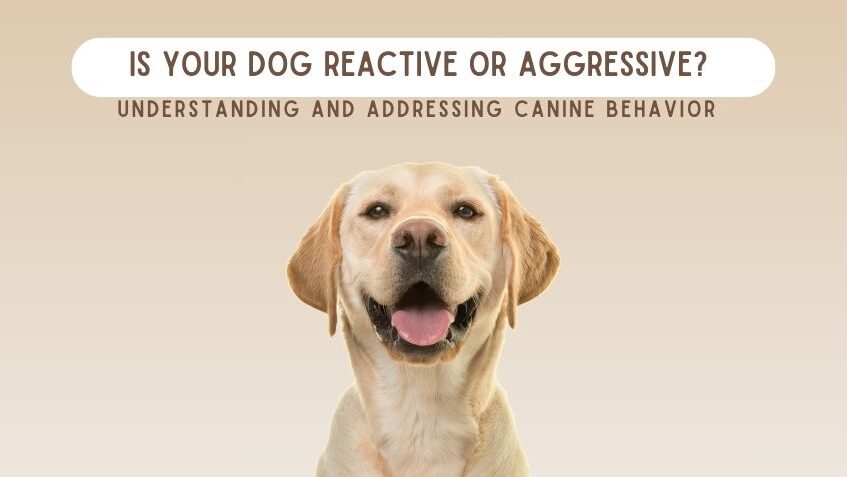Is Your Dog Reactive or Aggressive? Understanding and Addressing Canine Behavior
We’re here to explore a crucial topic that many dog owners face: understanding and addressing reactive or aggressive behavior in dogs. While these behaviors can be challenging, they are often rooted in fear, anxiety, or past experiences. This content aims to help you recognize the signs, understand the causes, and provide guidance on how to manage and improve your dog’s behavior.
What Is Reactivity and Aggression?
Reactive behavior: Reactivity in dogs refers to an exaggerated response to a stimulus, often resulting in barking, lunging, or growling. It’s often rooted in fear or anxiety.
Aggressive behavior: Aggression is more intense and may involve physical harm to another animal or person. It’s a complex issue with various underlying causes.
Recognizing the Signs:
Reactivity signs: Watch for signs such as excessive barking, pulling on the leash, or raised hackles when your dog encounters other dogs or people.
Aggression signs: Aggressive behavior can include growling, snarling, snapping, or biting. These signs are usually associated with an intent to harm.
Common Triggers:
Identify common triggers for your dog’s reactivity or aggression, which may include fear of strangers, past trauma, resource guarding, or territorial behavior.
Understanding the Causes:
Often, reactivity and aggression stem from fear, anxiety, or insecurity. Understanding the root cause is crucial to addressing the issue effectively.
Seeking Professional Help:
If you’re dealing with aggressive behavior, consult with a professional dog trainer or a veterinary behaviorist. They can create a tailored behavior modification plan.
Positive Reinforcement:
Utilize positive reinforcement training techniques to encourage good behavior and create a more positive association with triggers.
Gradual Exposure:
Gradual exposure to triggers in a controlled environment can help desensitize your dog and reduce their reactivity or aggression.
Patience and Consistency:
Behavior modification takes time. Be patient, stay consistent, and celebrate small victories along the way.
Safety Measures:
Ensure the safety of your dog and others. Use a muzzle or other safety equipment as recommended by a professional.
Remember:
Reactive and aggressive behavior can often be managed and improved with the right approach and support. Don’t give up on your dog – seek professional guidance and be an advocate for their well-being.
Understanding and addressing reactivity or aggression in your dog is a journey that requires patience, compassion, and professional guidance. We hope this content helps you on the path to a happier, healthier, and more well-adjusted canine companion. Feel free to share your experiences and insights in the comments, and let’s support one another in this challenging but rewarding journey. 🐾❤️
You may also visit – https://www.facebook.com/angkopparasahayop
#DogBehavior #Reactivity #Aggression #DogTraining




